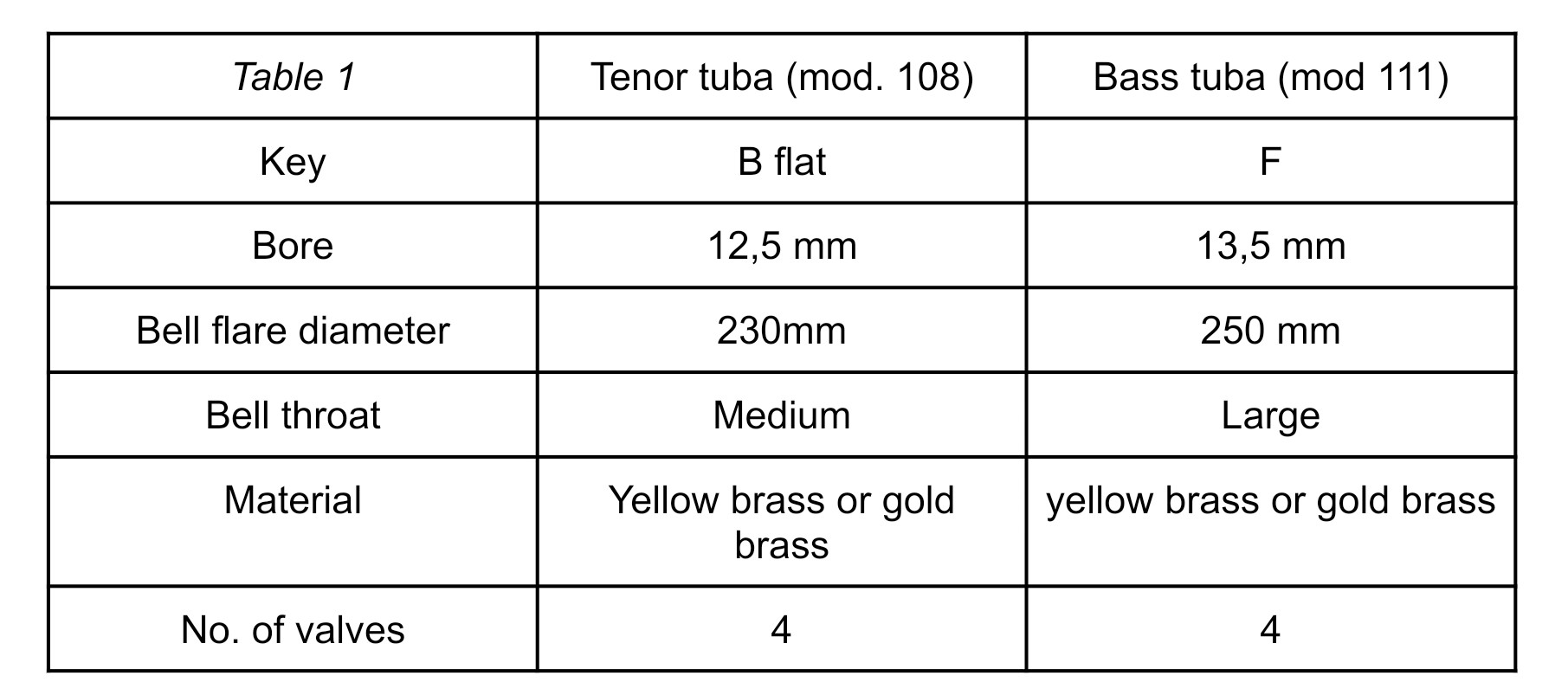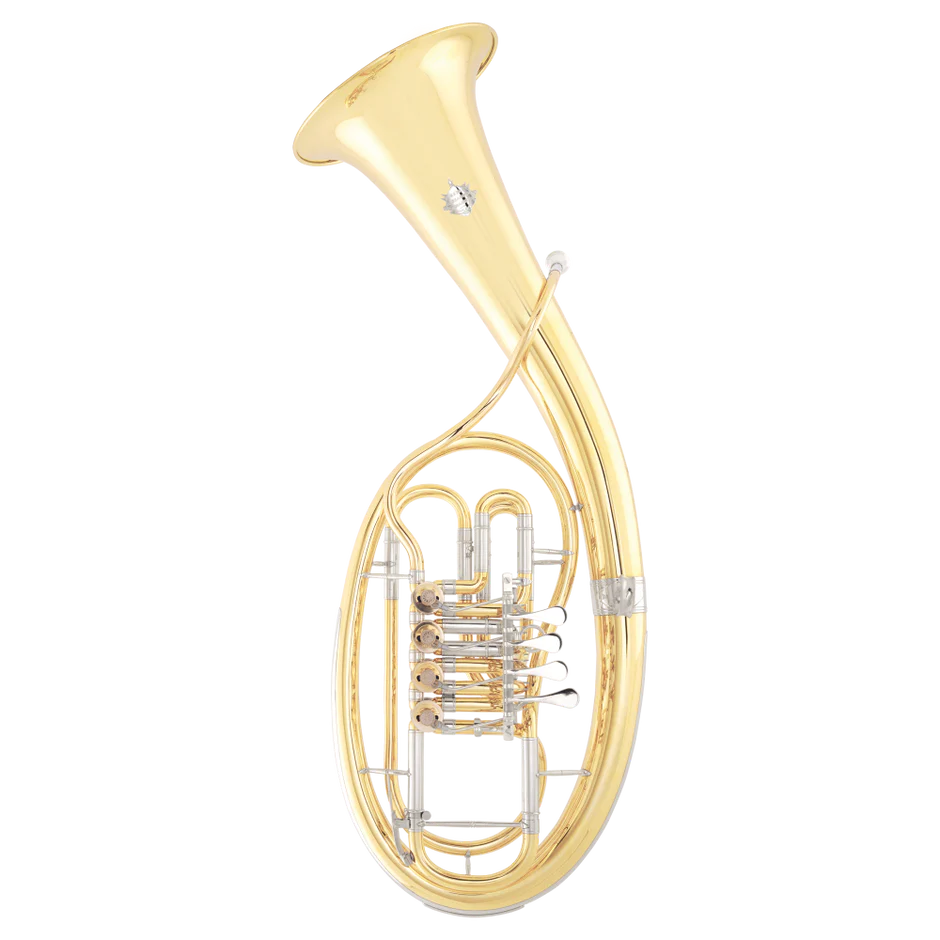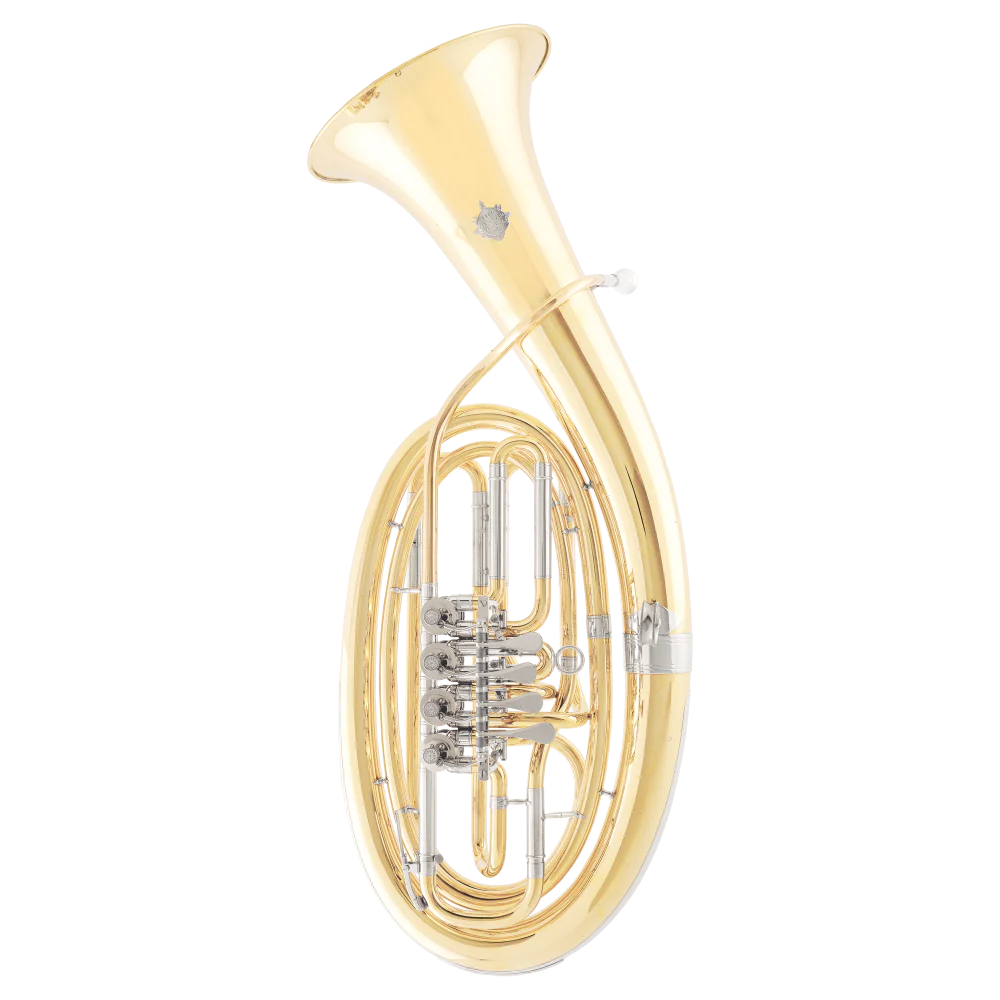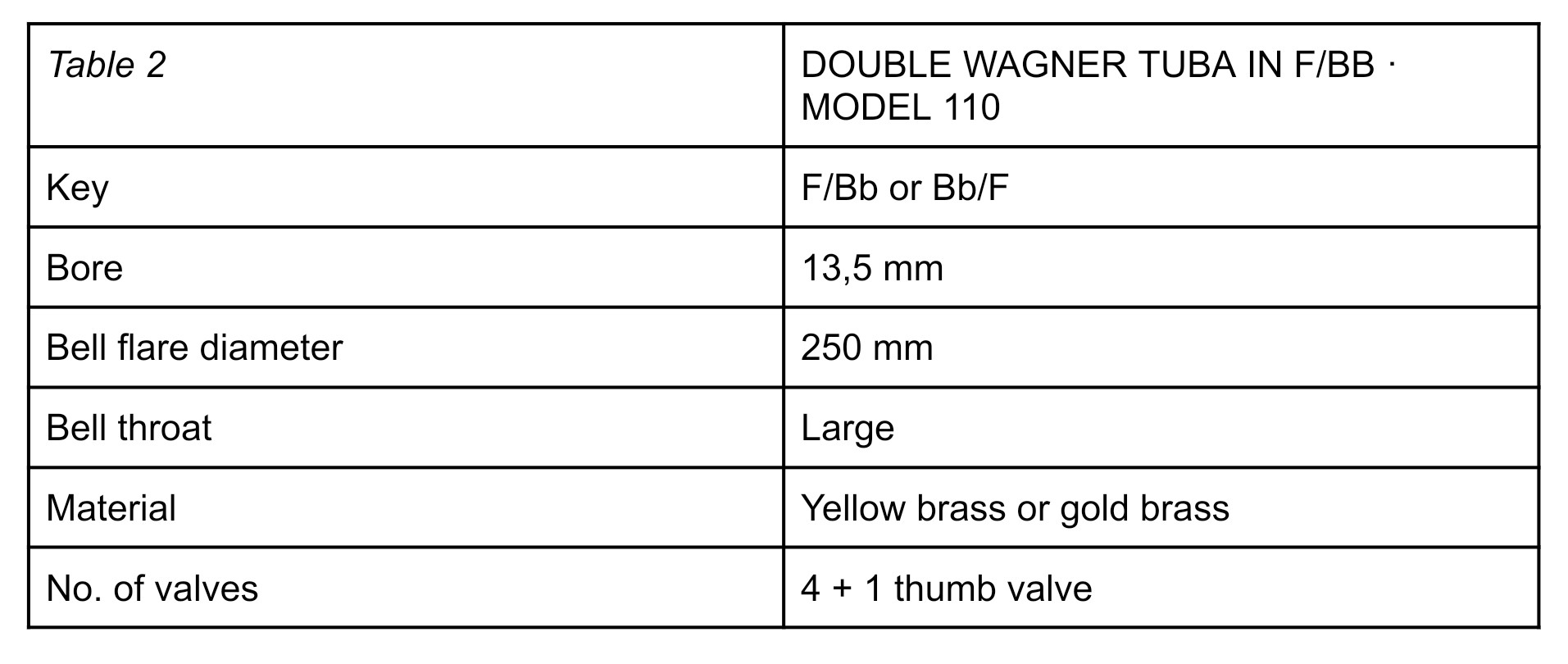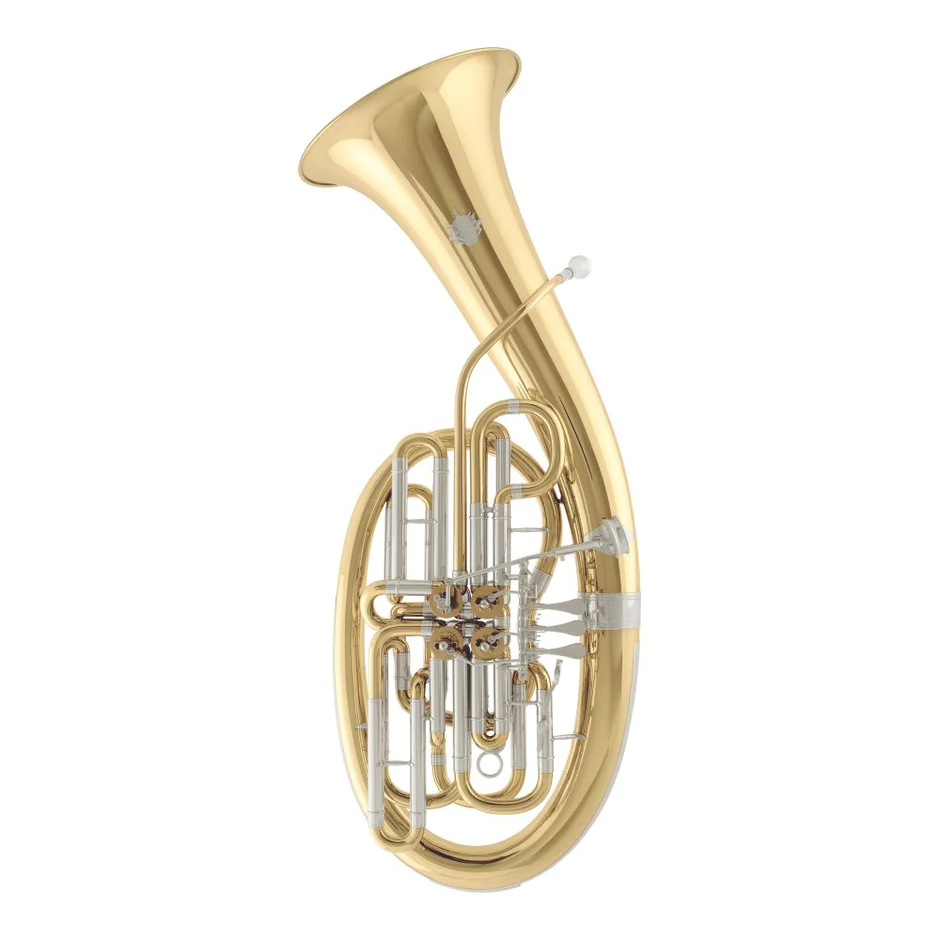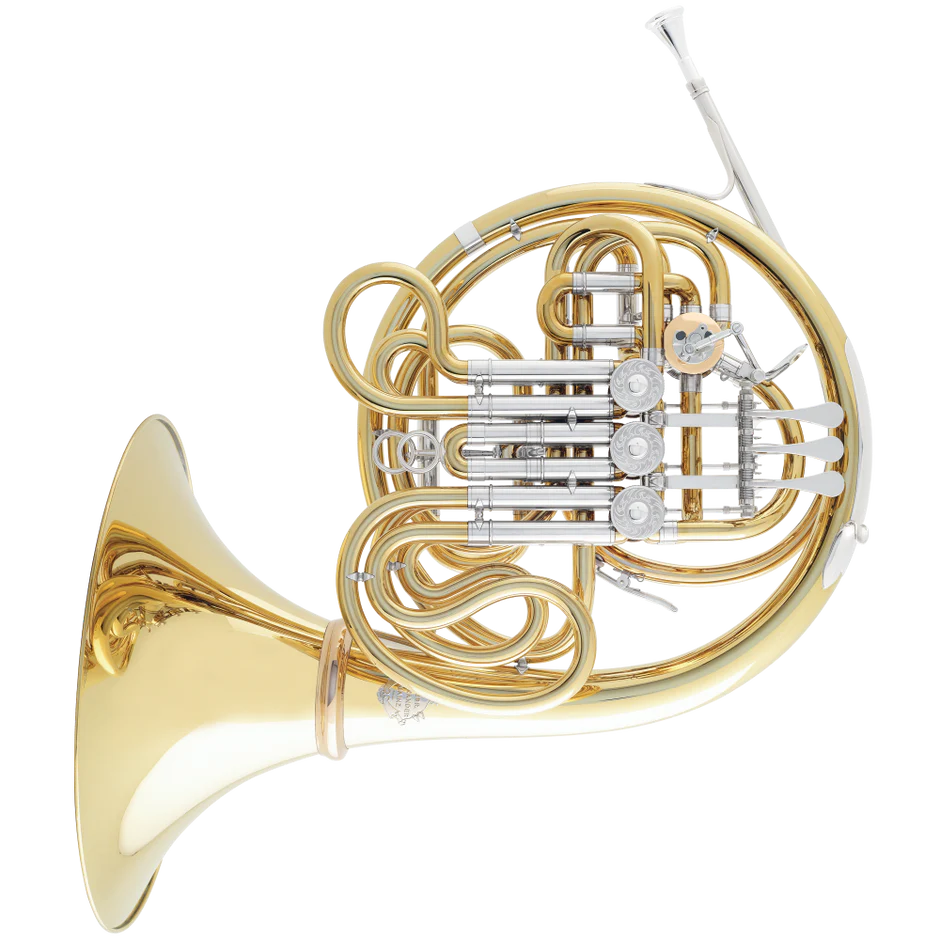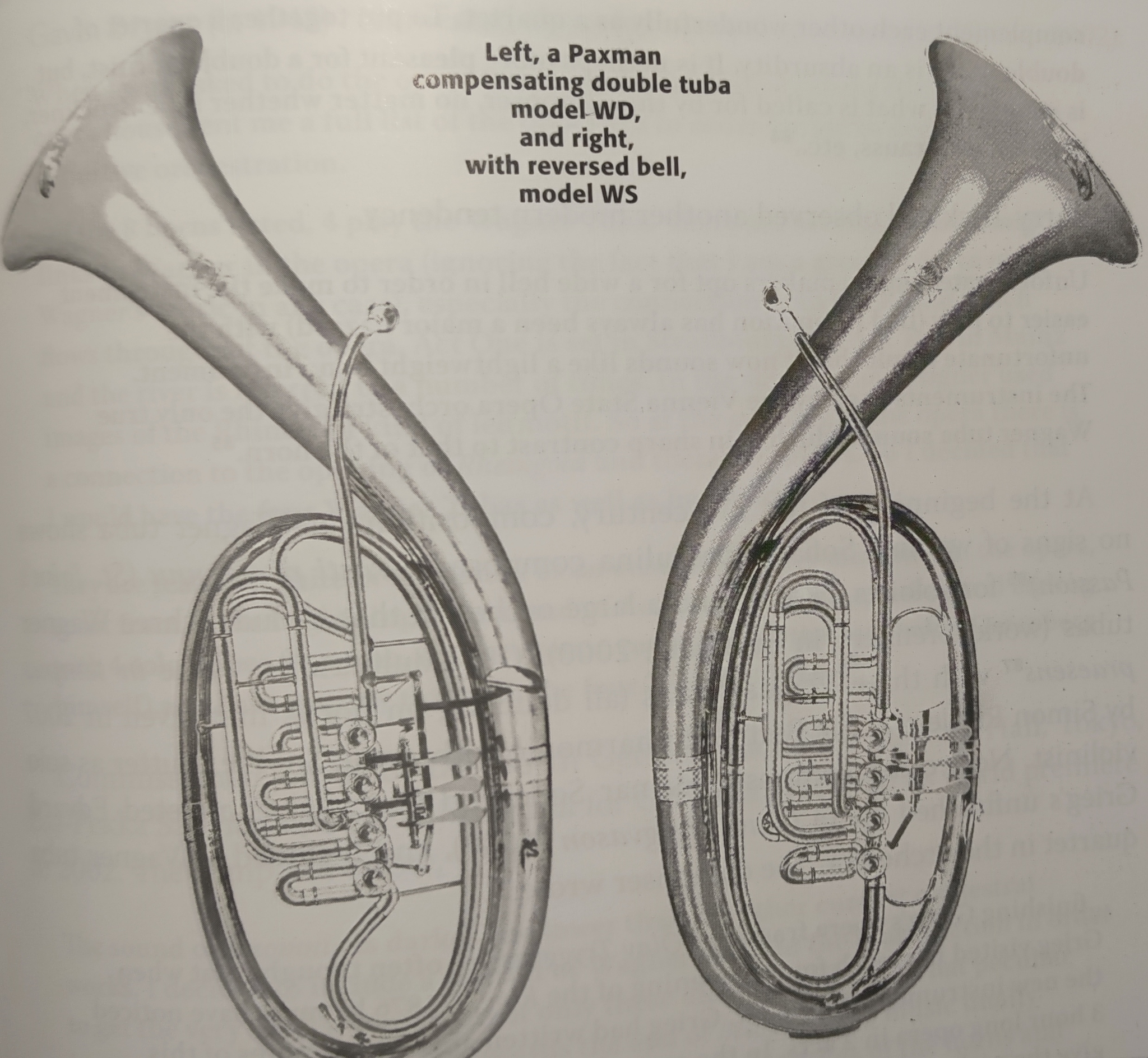3.1.2 Wagner tuba types
As mentioned earlier, the Wagner tuba section (in the Ring of the Nibelung) is comprised of a quartet, meaning two high voices and two low voices. This implies that the range in which the parts unfold is different, with some being higher in pitch (odd Wagner tubas, 1 and 3) and others lower (even Wagner tubas, 2 and 4). Therefore, Wagner named this quartet with the terms "tenor tuben" (for the high voices) and "bass tuben" (for the low voices), and since then, these two types have existed. Both types are explained below, detailing the construction characteristics of each. To analyze this, data from the Gebr. Alexander factory has been used, as their Wagner tuba models are the most commonly employed instruments.
In addition to these two types, there is a third, less commonly used but highly versatile and yielding good results: the double Wagner tuba. This model combines the features of the previous ones, allowing it to be used for both a high and a low register. The characteristics of this model are as follows.
As you can see above (table 2), this type combines the characteristics of both tubas, having two different keys, Bb and F (the thumb valve facilitates the switch between one length and the other). Regarding dimensions, it can be observed that they are the same as those of the Bass Tuba. The reason for this is that if the bell and bore were smaller, it would not be physically possible to achieve the results that this tuba offers. For this reason, this type of tuba is very effective for performing roles within a mid-low register range since in the high register, due to its larger size than desired, achieving the same result and ease as with the tenor tuba is more challenging.
The early 20th century also saw the creation of the compensating double Wagner Tuba models, which, as the name suggests, offer the characteristics of the double without being double. David Werden (2023) explains that the 4th valve tubing routes back through the first 3 valves so that when the 4th valve is used in combination with any other(s), air can automatically be detoured through extra compensating loops. Their result is similar, although it is difficult to obtain a good low register. Something that I have experienced with the study shown below (section 3.2.1).
Finally, if we analyze the Wagner tuba alongside the horn (table 3), we can see the points where they are more similar and where they differ more in terms of construction. Both instruments share the same tube length (approximately one and a half meters), molded in different ways but maintaining the same register and key (F/Bb). There is a clear difference in bore, with the horn having a considerably smaller bore. However, the bell has a considerably larger diameter, which will be directly related to the sound qualities of each instrument, explained later. The valve mechanism remains the same in both, but in the tuba, it operates in the opposite direction to the double horn, taking the Bb tuba up to F and the F tuba up to C. Finally, both share the same diameter of the leadpipe (the beginning of the tube where the mouthpiece is placed), ranging from 0.75 to 1 cm, and this allows the use of the same mouthpiece in both (a topic that will be addressed later).
As a curiosity, as this model is rarely used, in the 20th century, with all the increase of Wagner tuba builders, some raised the possibility of placing the bell on the opposite side and changing the direction, i.e. pointing to the left side. The Paxman family of London created a wagner tuba with these characteristics, with the intention of securing a more horn-like feel for the left hand (W. Melton (2008) p.128).
